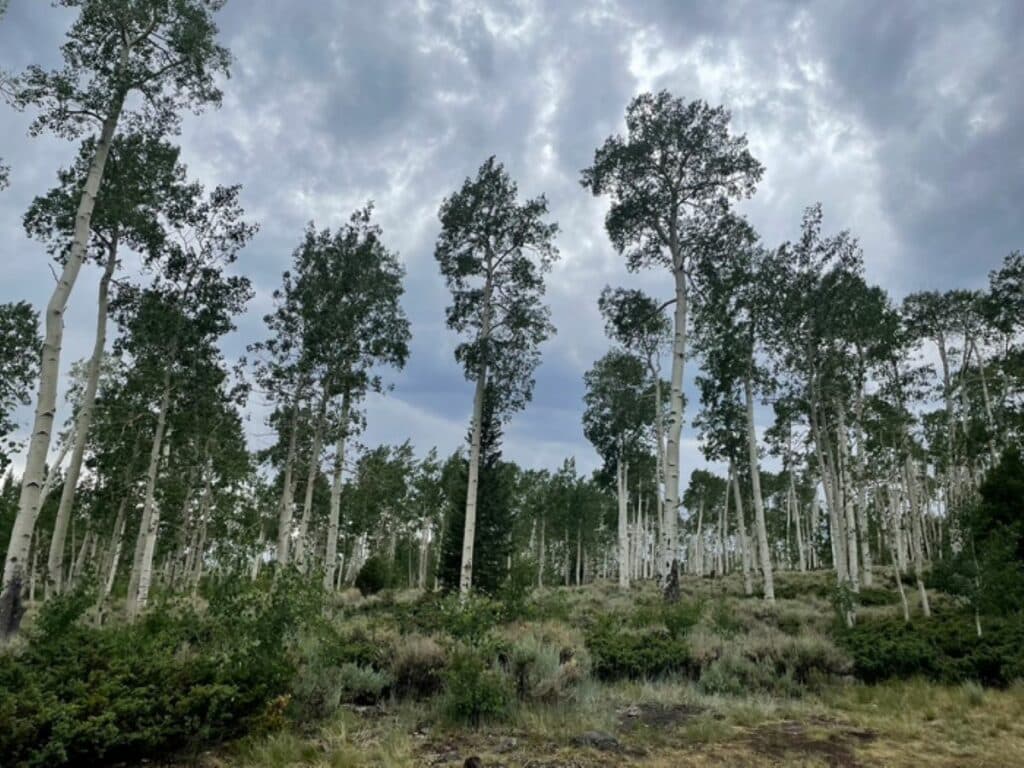The largest organism in the World, Pando, Latin for I spread, is a massive grove of quaking aspens. They are known for their bright yellow color in the fall and make a quaking sound as wind passes through their leaves. Their root structure gives them the unusual capacity to create genetically identical offspring. Aspens tend to colonize vast areas of land using a shared root system because of their ability for asexual reproduction through their roots.
The Pando aspen grove, which spans 106 acres in southcentral Utah, appears to be a forest but comprises more than 47,000 aspen stems joined at the root and have the same genetic makeup.
By weight and land mass, the Pando is the most giant tree in the World. According to research, Pando is one of the planet’s oldest species and has regenerated for 9,000 years.
Jeff Rice and Lance Oditt’s new work reveals a unique acoustic portrait of this botanical wonder. The recordings are like never heard before.

Presenter Jeff Rice, a sound artist from Seattle, said, “Pando challenges our basic understanding of the World. The idea that this giant forest could be a single organism defies our concept of the individual. Its vastness humbles our sense of space.”
“The sounds are beautiful and interesting, but from a practical standpoint, natural sounds can be used to document the health of an environment. They are a record of the local biodiversity, and they provide a baseline that can be measured against environmental change.”
Rice didn’t expect to hear much when he experimentally placed a hydrophone into a hollow at the end of a limb and threaded it all the way to the tree’s roots.
Rice said, “Hydrophones don’t just need water to work. They can pick up vibrations from surfaces like roots as well, and when I put on my headphones, I was instantly surprised. Something was happening. There was a faint sound.”
The source of that sound may not be Pando’s root system. However, a few experiments confirm the theory. Rice and Oditt demonstrated that vibrations can travel through the ground from one tree to another. They made a light tap on a branch some 90 feet distant, and the hydrophone picked up a low thud. Rice likens it to the traditional tin can phone.
Rice said, “It’s similar to two cans connected by a string. Except a huge root system connects 47,000 cans.”
Amid a thunderstorm, the signal recorded by the hydrophone also increased– the device captured an eerie low rumbling.
Even though tapping on a branch was not audible through the air at that distance, the hydrophone managed to pick up the sound when it was 90 feet away. This supports the idea that Pando’s root system is interconnected, but an appropriate experimental setup would be necessary to establish that the sound wasn’t resonating through the ground.
Oditt said, “The findings are compelling. While it started as art, we see enormous potential for use in science. Wind, converted to vibration (sound) and traveling the root system, could also reveal the inner workings of Pando’s vast hidden hydraulic system in a nondestructive manner. Friends of Pando plans to use the data gathered for additional studies on water movement, how branch arrays are related to one another, insect colonies, and root depth, all of which we know little about today.”
Their presentation, “Beneath the tree: The sounds of a trembling giant,” will take place Wednesday, May 10, at 10:30 a.m. Eastern U.S. in the Great America 1/2 room, as part of the meeting running May 8-12 at the Chicago Marriott Downtown Magnificent Mile Hotel.
